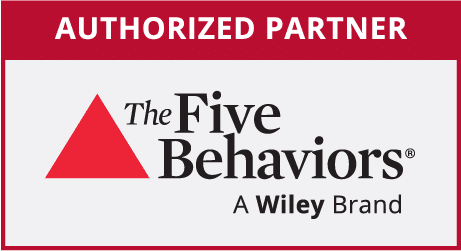
5 tips for facilitating DiSC
Although DiSC® profiles are specifically designed to be easily interpreted and understood, a good, certified DiSC facilitator can help maximize the learning and get more value out from the profiles.
The skill and expertise of the person interpreting and applying the results of DiSC are as critical as the tool itself. Repairing a car often requires sophisticated diagnostic equipment. But having tools for that is not enough. An expert mechanic is needed to translate the information, create meaning, and take action that results in a positive outcome. The same is true with DiSC.
Here are 5 tips that will help you get the best out of your DiSC session:
1. Always introduce the DiSC Cornerstone Principles and reinforce them at every opportunity
- All DiSC styles and priorities are equally valuable, and everyone is a blend of all styles
- The goal of DiSC isn’t to put people to boxes. Actually, it’s the opposite – to get them out of their box and increase their behavioral amplitude
- Your DiSC style is mostly inborn but is also influenced by other factors such as life experiences, education and maturity
- Understanding yourself better is the first step to becoming more effective when working with others
- Learning about other people’s DiSC styles can help you understand their priorities and how they may differ from your own
- You can improve the quality of your life by using DiSC to build more effective relationships in your workplace, with your clients, and in your personal life
2. Review the profiles of the participants in advance
This will help you to understand how the participants may prefer to receive information and allow you to adjust your delivery style accordingly. Reviewing the results helps also to be prepared for questions that may arise during the session.
If you work with teams, create free Team View Reports and generate a Group Culture Report to get an overview of the collective styles and how they work together.
3. Make use of additional tools
If a respondent struggles to identify with the profile results (it generally happens rarely), refer to the Supplement for Facilitators in Everything DiSC profiles or Graph I and II page in DiSC Classic profiles.
Supplement for Facilitators report will give you more information about the respondent. The umbrella graph is particularly helpful to identify DiSC styles that may not be fully explored within the report.
In this example, a respondent has returned a D (Dominance) preference based on the algorithm’s interpretation of their answers to the self-assessment. However, the main report does not reflect the fact that they also have high scores on the CS/SC areas. Exploring this with the respondent will help them understand their results and feel more comfortable with the analysis.
The Supplement will also help you discuss those priorities that may have been scored highly but are not the natural priorities associated with the style. In this example, the need for Stability is not a usual fit with the D style, but is clearly important to this person and may drive aspects of their behavior.
With DiSC Classic, you can similarly get more background information from the last page in the profile and analyze Graph I and Graph II and the meaning behind them.
4. Save yourself time and take a step up by using a DiSC Facilitation Kit
These resources provide you with everything you need to run a workshop or coaching session.
Includes three 90-minute modules, fully-scripted facilitation with engaging activities, and workplace-focused video that features DiSC® styles in real work situations
You don’t need to follow this ready-made training program word by word, but it will certainly save you time in preparing a tailored workshop for your own audience.
5. Ways to encourage participation and improve your own facilitation skills
- Frame it up. Plan opening comments carefully to communicate session goals and explain what you want to accomplish. People are more willing to open up and learn when they know the goals.
- Get people talking. Start with an easy, safe question. Even beginning with casual introductions makes participants more likely to participate later.
- Summarize frequently. Think of this as jumping to the “big picture”: remind people what the goals and scope of the discussion are, make connections and point out common themes, summarize information and how it will be used.
- Ask questions that can be answered with yes or no, single words, or short phrases when you want to slow discussion and regain control.
- Know when to stop. Bring the discussion to a close at an appropriate time – when you’ve reached your goal or when the discussion is no longer fruitful. Thank the group for their valuable input.
You might also be interested in






